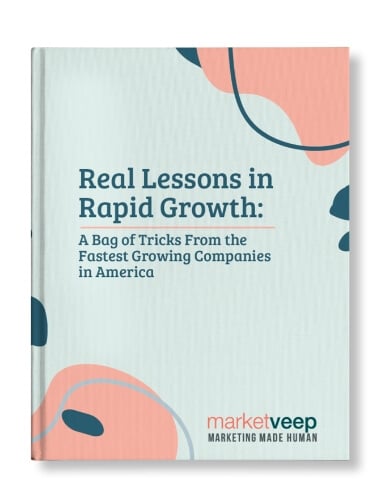How To Design a Strong & Memorable Logo in 7 Steps


By Market Veep
Logos are sometimes the most overlooked and yet overthought element in a brand. When designed well, your logo will complement your company brand. When not designed well, your logo can negatively impact everything your brand stands for.
The earliest forms of logos were manually applied to crates and other shipping containers to help merchants to distinguish their contents. Before stores and widespread advertising became prominent, logos were created not for consumers, but for distributors.
During the Industrial Revolution, when printing became available, brands started realizing that simply putting words on their products was no longer a viable way to address new audiences or to mass market their product. Although printing was still monochromatic at this time due to lithography printing, the combination of color, shape, and type helped companies design logos that easily communicated brand names to consumers.
Fast forward to the 1990s and 2000s. With the invention of personal computers, logo designs became easy and quick to create. Suddenly, business’ weren’t the only ones who needed logos. Events, festivals, organizations, schools, and even individuals all wanted their piece of the logo craze.



Suddenly, everyone has a logo. Many elements have become repetitious, overused, meaningless, and forgettable. The best brands stand out from these redundancies by digging deeper into what their brand stands for and how they can use every bit of uniqueness to stay relevant.
Different Types of Logos
There are five categories that logos tend to fall into. Some logos may have elements that overlap or have a combination of these categories.
- Wordmarks: A free-standing company name, acronym, or product name.
Examples: Google, eBay, Coca-cola, IBM, ASPCA, NASA, Netflix.
- Letterforms: A design using one or more letters that act as a mnemonic device for a company name.
Examples: Tesla, HP, Adobe, PlayStation, Under Armour.
- Pictorial Marks: An image that is immediately recognizable, defining a company because of its simplicity and style.
Examples, Apple, Twitter, Target, Nike, Starbucks, DropBox.
- Abstract/Symbolic Marks: A symbol that usually conveys an idea based on the company.
Examples: Spring, Nike, AirBnB.
- Emblems: A mark in which the company name is connected to a pictorial element.
Examples: Ikea, Harley Davidson, Chipotle, Burger King, Toms.
Step 1: Communicate with Your Graphic Designer
Every step of the logo creation process should involve communication between you and your designer. Creating a clear and effective logo design brief will help things stay on track and reduce bumps in the road. The more information you can pass along to your designer, the more they have to work with to help you create the perfect logo that suits your brand.
Keep an open mind when it comes to taking suggestions and advice from your designer. They have extensive knowledge when it comes to pairing colors, typefaces, what various elements can add or take away from the aesthetic of the design. Remember, the designer wants to work with you to create something meaningful and memorable to help your brand, not just to slap some shapes, colors, and text together to make something pretty.
Step 2: Define Your Brand
Companies create an emotional appeal to connect with their customers and audience. By doing so, customers will remember these brands and start to create a lifelong relationship with them, also known as brand loyalty. In a market full of competition, brands have no choice but to establish this emotional connection if they want to succeed.
Quite frankly, how a brand is perceived will affect its success, no matter what type of organization it is — start-up, non-profit, or product.
Questions to ask when defining your brand:
- What is your story?
- Who is your ideal customer?
- What pain points are you going to solve?
- Why should your customers trust you?
- Who is your competition? What are their characteristics?
- What makes you different?
Step 3: Find Your Brand Aesthetic
Once you have identified your brand more in-depth, have researched your ideal customers, and have analyzed what competitors are doing, your next step is to establish an aesthetic.
Creating a “vision board” or “mood board” can help you visualize what elements you’re looking to incorporate into your logo. The purpose of this exercise is to gain inspiration and help yourself create something all your own. Gather anything that can help tell the story of your brand - photography styles, typography, colors, textures, patterns, and shapes. Anything can be included in a vision board. Have fun with this!
Once you’ve created your vision board (you can always go back and add or take away from it) it’s time to see the overview. Have you gathered a lot of simple and minimalistic images, or a lot of bold and fun typography? This will help you determine the look and feel of not only your logo, but your brand identity. Come up with adjectives to describe what you have collected as it will start to give you a language to describe your brand.
Step 4: Typography Matters
Picking out any old font on the list won’t cut it. You’ll likely to choose a font that falls into one of these three categories: sans-serif, serif, or script.

Choose a font that is uncommon among companies in your industry and stay away from generic ones that come standard on just about every computer. These often include: Times New Roman, Arial, Comic Sans, Impact, Trebuchet MS, Verdana, and more.
Take into consideration where and how your logo is going to be displayed. The typeface needs to be legible at various sizes, so testing it is key to making sure it will be readable at small sizes such as on mobile devices, pens, notebooks, etc.
Step 5: Don’t Forget About Color
Colors can express emotions without any words attached to the logo. Choosing a color shouldn’t just be based on whether is looks good or what you like/dislike. Your competitors need to be taken into consideration to determine if your logo is going to stand out or fall into the same series of colors in the industry.
It’s also important to produce your logo in different color variations - regular (color), light(white) and dark (black) so it can be versatile when printed or displayed on products.
Step 6: Sketch it Out
Combining fonts, shapes, colors, and your brand’s story into a cohesive logo isn’t easy. So once the above steps have been completed, start sketching! Always resort to pen and paper rather than a tablet and drawing program. This helps to eliminate the need for perfection by adding in color or getting strokes just right. By using a pen, you’re not pressured to erase something that later could become the spark of another idea.
Don’t be afraid to jot down anything that comes to mind. Remember, this stage is to just get everything down in front of you, as you can always refine ideas later in the next step. Often, the best ideas come to life based on a combination of sketches, so it’s important not to be hard on yourself if one idea seems uninspired at first.
Step 7: Keep Refining
Once you have a couple of solid ideas floating around, you can begin refining them on the computer. This step will be best-suited to your graphic designer, as they can work in the correct programs to easily manipulate shapes and typography to your liking.
Saving each small revision will help to see the overall progress that the logo is making. You’ll also be able to decide which variations work better. Keeping the logo in black and white for this step will help to keep the focus on the shapes that the letterforms and lines take without distracting your attention on color. Adding color at the end will enhance the logo, but should not be the sole focus logo.
Congratulations, you’ve worked together with your graphic designer to make an impressive logo!
As long as you stay consistent with the logo, you’ll get your company off the ground with exciting visual images and graphics. Consistency is key!
Get The Latest From
Market Veep
RELATED ARTICLES

Master Sales Funnel Strategies: Tofu Mofu Bofu!
Between SEO, SEM, and SERPS, we’re always finding clever ways to break down concepts into four...

Why B2B Demand Generation Strategies Work
The sparkly, PR rep cousin of lead generation, this approach is all about growing your audience by...

Key Marketing Strategies for Robotics Manufacturers
In fact, experts project that the U.S. Robotics market is on track to pull in $7.85 billion in 2024...

Get Growing!
Download our eBook and get advice from 8 CEOs of Inc. 5000 companies in their own words.

GREAT MARKETING PARTNER
Market Veep is a great firm that handles all of our marketing efforts. This is the second time that I have used the firm. I highly recommend Market Veep!

Cres F.

EXCEPTIONAL EXPERIENCE
Market Veep's Onboarding Experts in Inbound Marketing are an absolute game-changer! From the get-go, their approach was top-notch. Market Veep's team has undoubtedly set the bar high for excellence in inbound marketing. Five stars aren't enough to commend their outstanding service!

Matthew W.

BEST PARTNER EVER!
As a growing business, setting up our first-ever HubSpot account was a crucial step towards enhancing our marketing and customer management strategies. From the moment we contacted MarketVeep, their team demonstrated professionalism, expertise, and a genuine desire to help us succeed. Overall, our experience with MarketVeep was exceptional, and we couldn't be happier with the results. Thanks to their guidance, we are now utilizing HubSpot to its fullest potential, streamlining our marketing efforts, and nurturing leads more effectively.

Jean M.

SET UP FOR SUCCESS!
We had an exceptional experience with Market Veep! Their team is professional, super organized, and friendly, and I truly enjoyed working with them. They executed on time and made the process super easy with their organization and documentation. In addition, they provided additional guidance and answered my many questions as I was new to HubSpot, and provided documentation resources for future use. We're now set up to leverage all that HubSpot marketing has to offer, and we couldn't have done it without Market Veep's expertise.

Bailey G.

OUTSTANDING WORK
There aren't enough words to describe the outstanding, professional work MarketVeep has provided to our company. From start to finish, the website design/development team at MarketVeep assigned to our project was extremely knowledgable, respectful, efficient and timely. The results went above and beyond our expectations and we could not be more thrilled with the improvements to the user experience on our website! Bravo MarketVeep, we'll absolutely be back with more projects!

Nadine B.

5 STARS FOR MARKET VEEP!
We had a fantastic experience with Market Veep! Their expert team seamlessly guided us through implementing HubSpot and provided comprehensive training across Sales, Service, and Marketing Hubs. Their knowledge and support significantly enhanced our workflow and overall efficiency. Highly recommend Market Veep for top-notch HubSpot solutions!

Anneke C.








